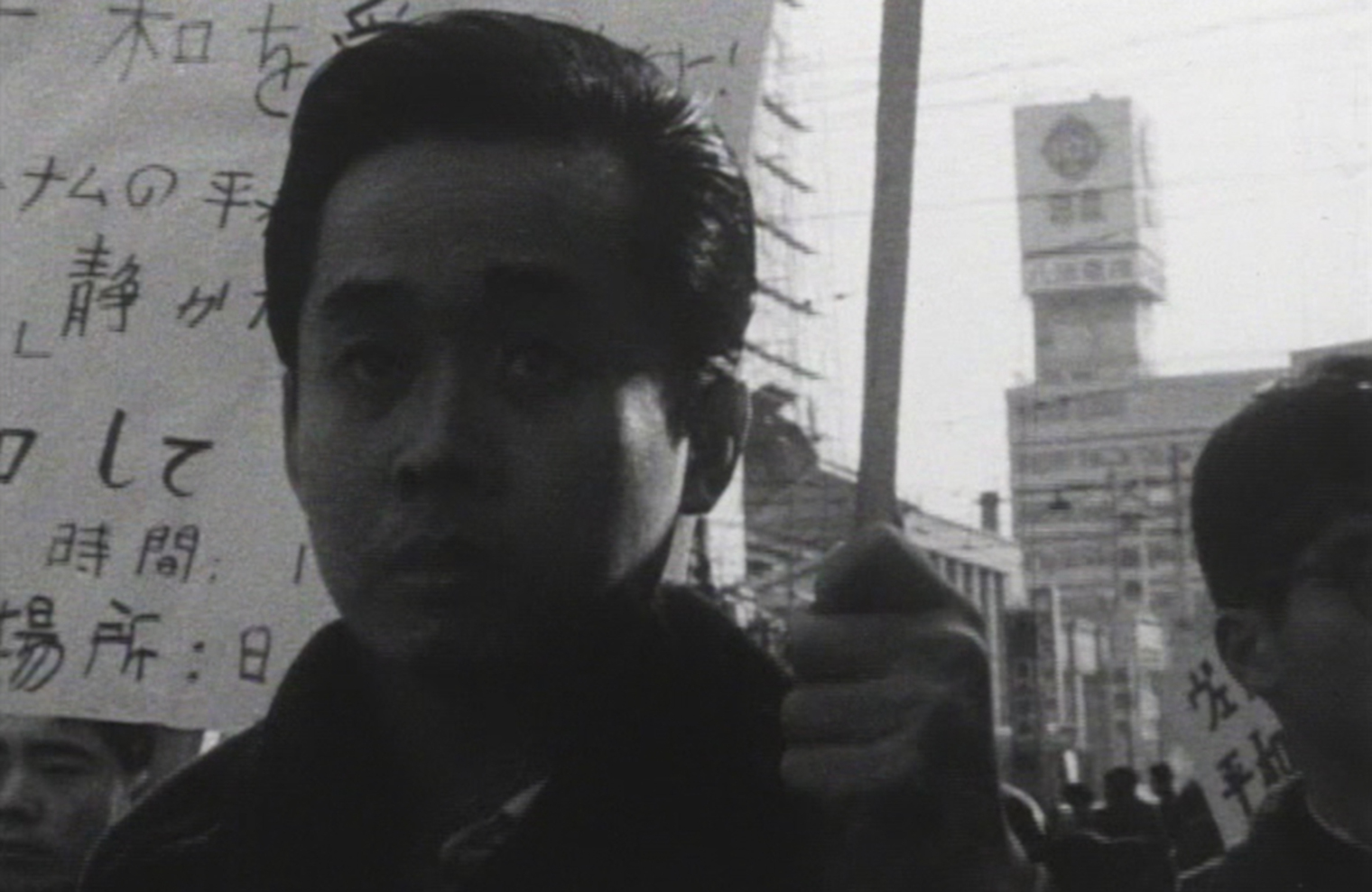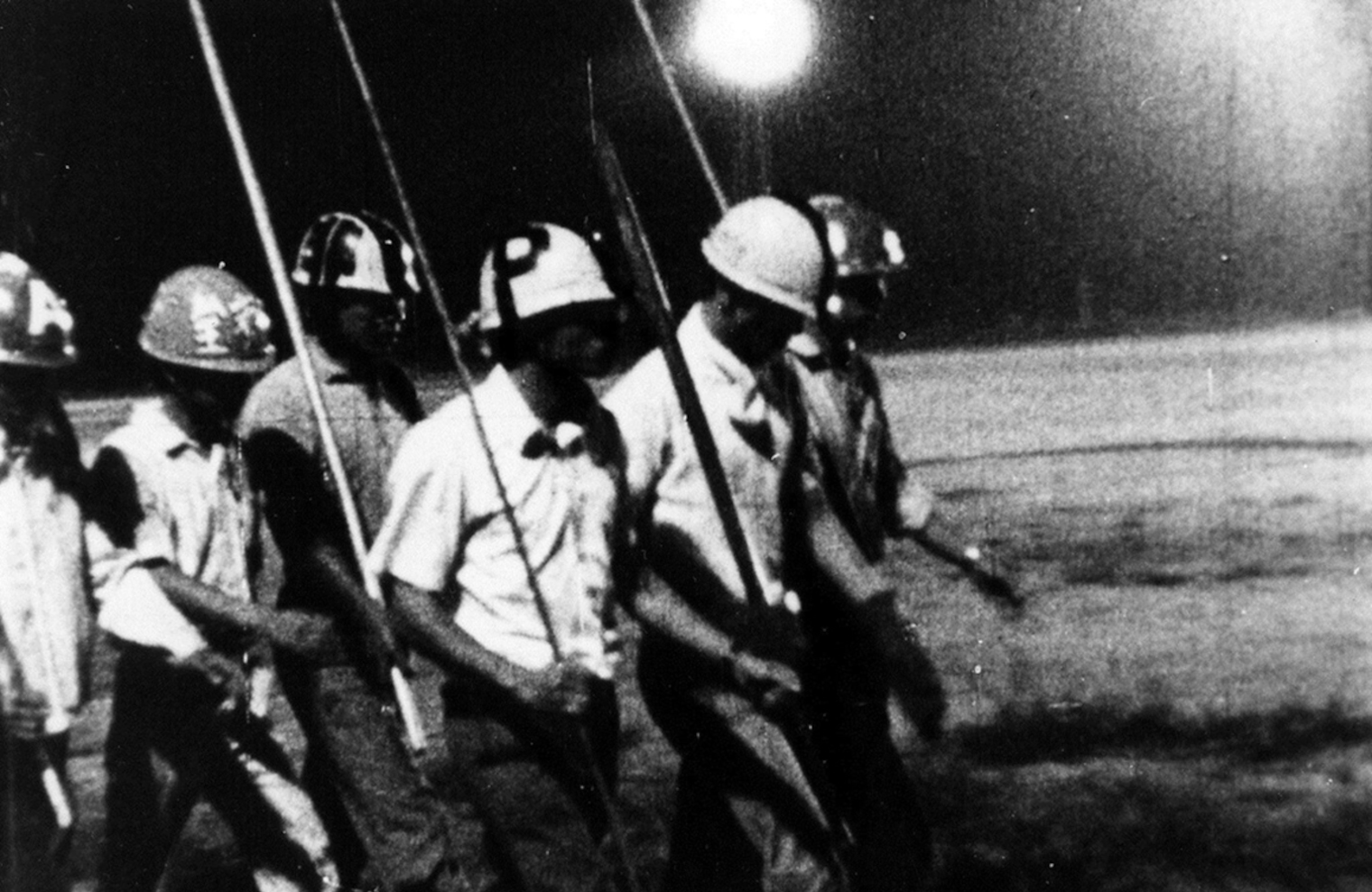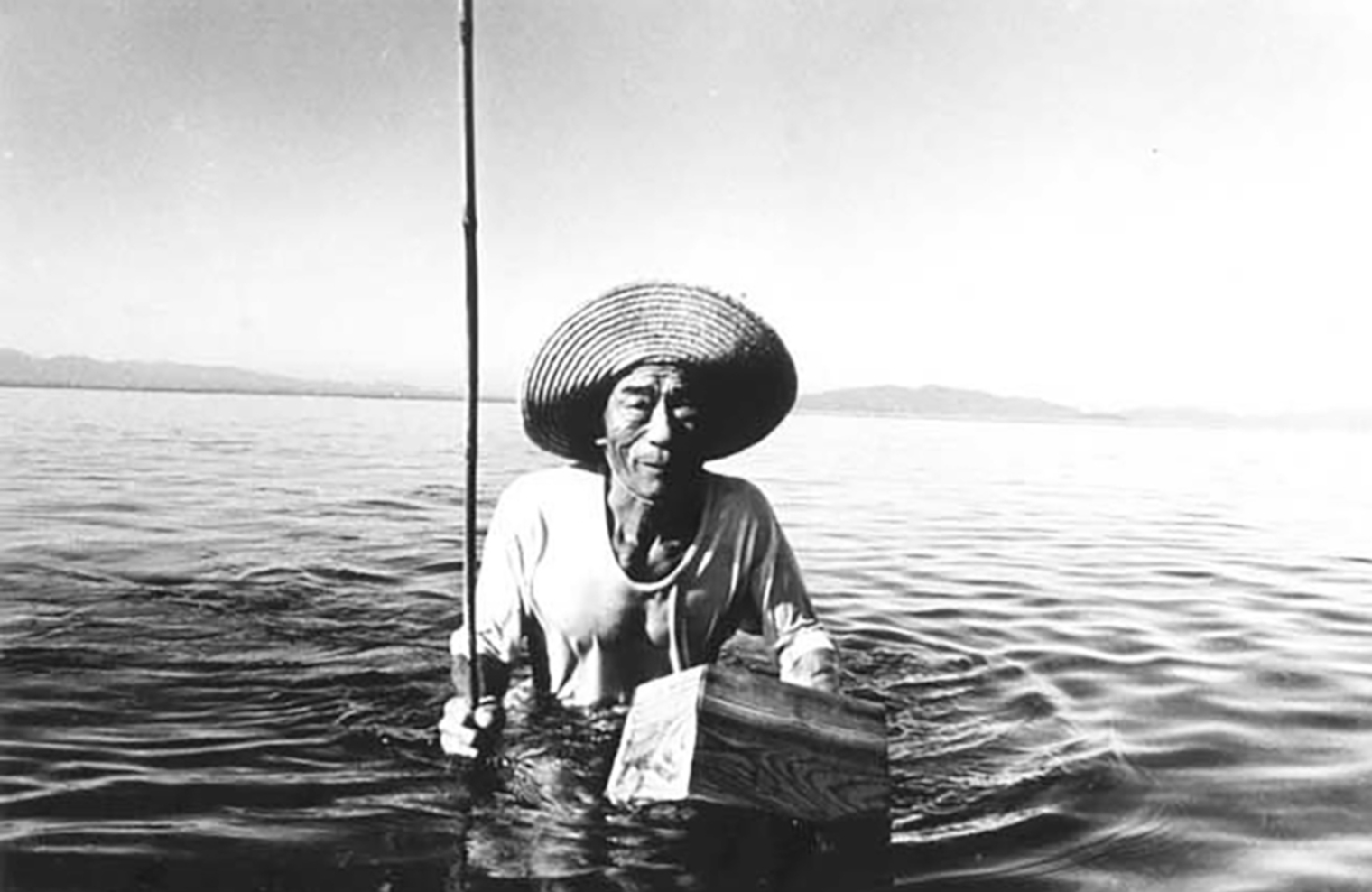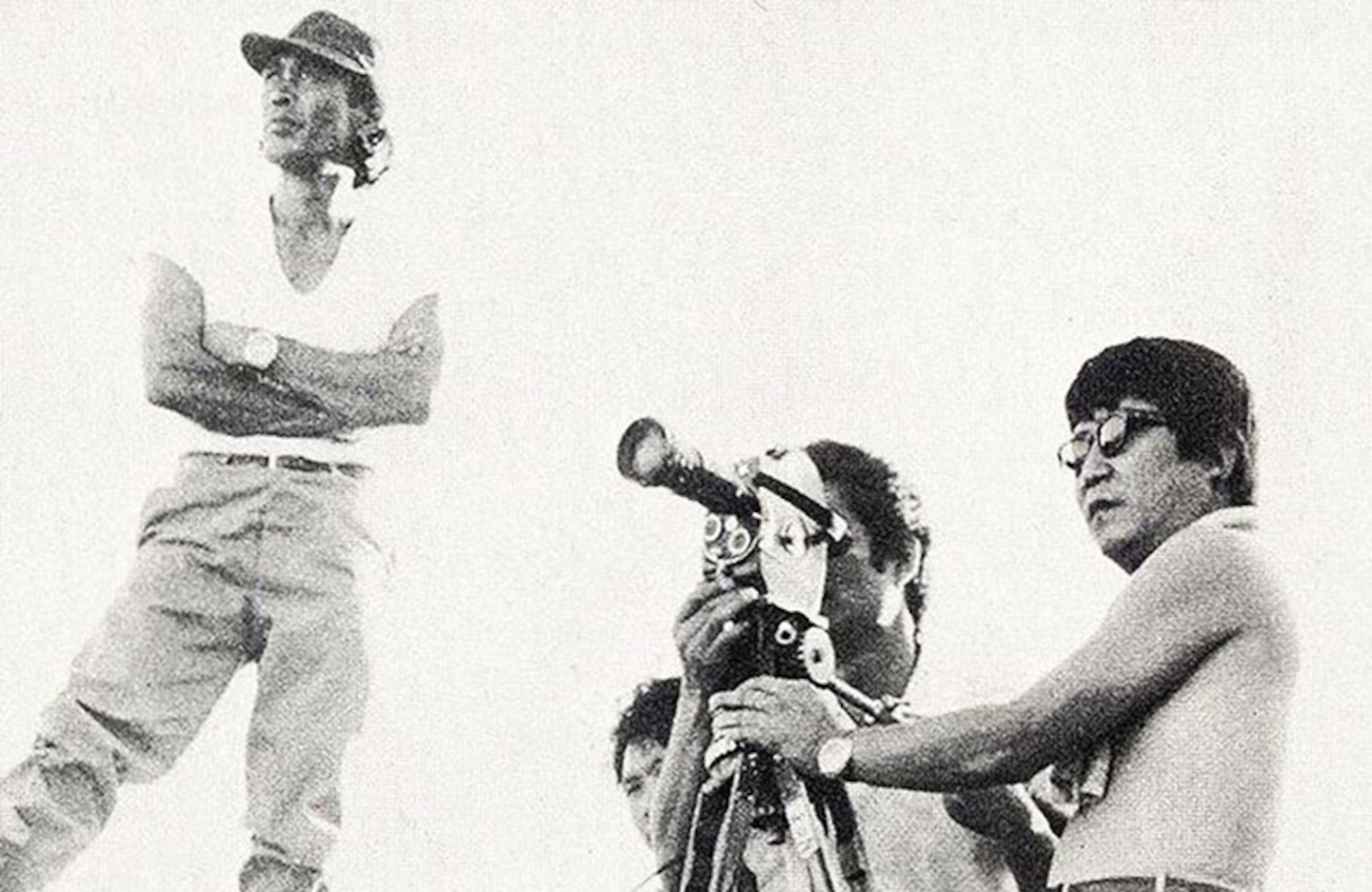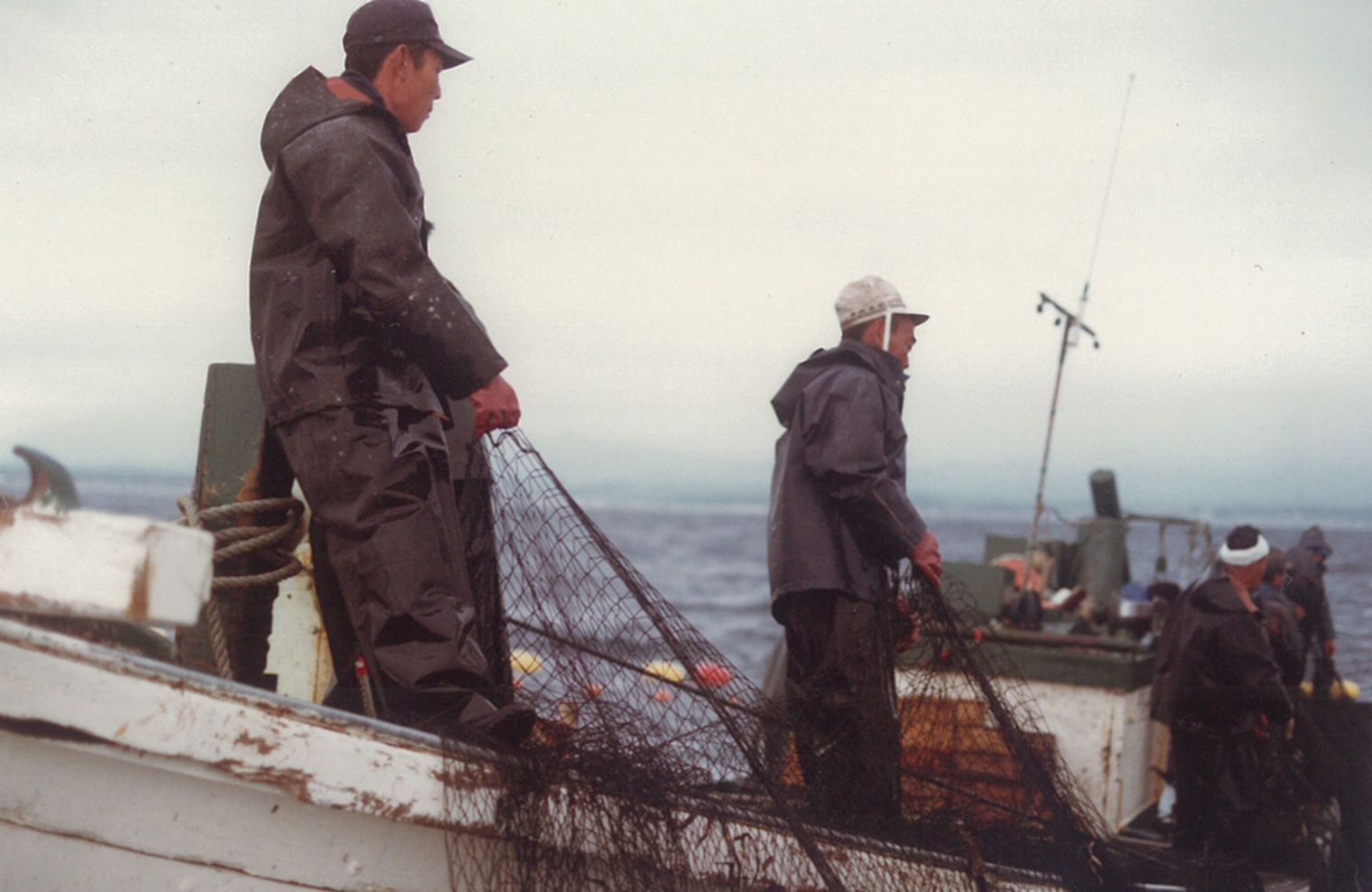Artist in focus: Tsuchimoto Noriaki
“One of Tsuchimoto’s juniors remembers this practice as ‘symbiotic’, and the ecological metaphor is apt. His idea was not that filmmakers would melt into the world of the subjects to become one with them; the filmmaker holding the camera would always be a different kind of entity. But while the people filmed and the film crew were irreducibly different entities, their meeting and interaction produced a meaning of an order different from any one of them. It was that meaning that the documentary film preserved. It is this idea that lies behind Tsuchimoto’s oft-used phrase, ‘film is a work of living things (eiga wa ikimono no shigoto de aru).’ Rather than in the authorial/technical procedures of cutting and splicing, film’s work took place in the specific relationships and interactions among living things.” — Justin Jesty
The documentaries of Tsuchimoto Noriaki (1928-2008) occupy a very special place in the history of documentary filmmaking. Starting in the early 1970s and for the following decades, he committed himself to making visible the terrible consequences of industrial pollution in the life of small seaside fishing communities in Japan, joining his voice to that of other artists and activists, directing films and organising screenings to advocate for the victims’ rights. His careful approach and commitment to filmmaking and advocacy have turned his work into an example of what political cinema could be. Tsuchimoto developed his very personal and independent way of working based on protracted engagement with the communities he worked with, making films based on mutual trust and empathy. At the same time that Ogawa Shinsuke and Ogawa Productions, another great force in Japanese post-war documentary (see Courtisane Festival 2017), were committed to filming the conflicts in the fields of Sanrizuka and were developing their own methods of working, Tsuchimoto was turning his camera to seaside communities and making extraordinary films about the sea and the local people.
Born in 1928, Tsuchimoto was politically engaged from a young age — he became a member of the Communist party in the late forties and was involved in the student university movement that emerged in the 1950s. Alongside other documentary filmmakers of his generation, he started by making public relations and educational films, working for Iwanami Productions. Working within the conventions of corporate filmmaking, he was nonetheless able to bring his own voice and politics into the films. Among several other films, he directed a powerful and critical portrait of modern Japan entitled On the Road: A Document. In the 1960s, he sided with the burgeoning student movement that was agitating the country, directing a film about a Malaysian exchange student threatened with deportation, Exchange Student Chua Swee-Lin. This film became a landmark in independent documentary filmmaking in Japan. More than merely filming a movement, the film helped to create a political wave of dissent. In 1969, together with members of Ogawa Productions, he filmed Prehistory of the Partisans, a remarkable film about the New Left in Japan and the radicalisation of the students, made from inside the university occupation movement.
Tsuchimoto’s greatest project became the long series of seventeen films he dedicated to the victims of the Minamata industrial mercury poisoning disaster. From 1971 onwards, the filmmaker and his crew documented the effects of this tragedy in the life and economy of the fishing communities around Minamata. The films are extraordinary portraits of these people and their world. For years, Tsuchimoto advocated for the victims’ rights, directing films and promoting them all over Japan and abroad. In the 1980s, while continuing the work on the Minamata issue, Tsuchimoto directed films alerting against the dangers of nuclear power, including Umitori - The Stolen Sea at the Shimokita Peninsula from 1984, and two documentaries shot in Afghanistan. This short retrospective will include some of these films, some of which have been especially translated into English for the first time, and will welcome the filmmaker John Gianvito, whose practice is greatly influenced by Tsuchimoto’s methods, and the Japanese studies scholar Aaron Gerow, who will give an illustrated lecture about the work of Tsuchimoto.
In collaboration with Athenée Français Tokyo, Kanatasha, Japan Foundation and Siglo. Thanks to Aaron Gerow, John Gianvito, Haruka Hama, Matsumoto Toshio, Markus Nornes, Oki Masaharu, Ono Seiko, Osanaï Terutarô, Nicolas Pinet, Takasaki Ikuko, Tokue Sato, Tsuchimoto Mokoto, Yamagami Sakiko, Yamagami Tetsujiro.
In conjunction with the Tsuchimoto Noriaki program, Cinematek and Courtisane devote a programme to the work of a filmmaker who, together with Tsuchimoto, is a shining example of the Japanese political cinema: Ogawa Shinsuke and the collective Ogawa Pro. This film selection is an extension of the retrospective that was compiled for Courtisane festival 2017 in collaboration with Ricardo Matos Cabo.
On the occasion of the programs devoted to Tsuchimoto and Ogawa, Courtisane, Sabzian and Cinematek have assembled a series of texts and interviews in a English-language publication.

